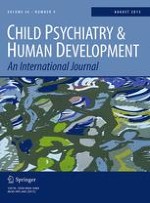01-08-2015 | Original Article
Mediating Effect of Psychopathy on the Risk of Social Problems Among Children with ADHD Versus Sluggish Cognitive Tempo Symptoms
Gepubliceerd in: Child Psychiatry & Human Development | Uitgave 4/2015
Log in om toegang te krijgenAbstract
Sluggish cognitive tempo (SCT) has been proposed as a unique syndrome; however research examining how it is different from attention-deficit/hyperactivity disorder (ADHD) is just starting to emerge. The present study extends this research by examining how specific personality features (i.e., psychopathy) may mediate the relation between ADHD and social problems, but not between SCT and social problems. Caregivers of 198 children (6–12 years old) that presented for an inpatient psychiatric evaluation completed standardized measures of childhood behavior problems. Bootstrapped mediational analyses were performed to evaluate the mediating role of psychopathy on the relation between social problems and symptoms of ADHD versus SCT. Two sub-domains of psychopathy—impulsivity and narcissism—emerged as partial mediators for the relation between social problems and ADHD symptoms; whereas SCT symptoms were not found to be related to psychopathy after controlling for ADHD symptoms. These findings provide support for conceptualizing ADHD and SCT as discrete syndromes as well as for the mediating role of psychopathy domains on the risk of social problems among a clinical sample of youth with symptoms of ADHD.
